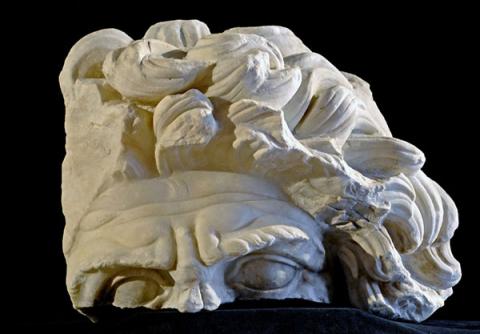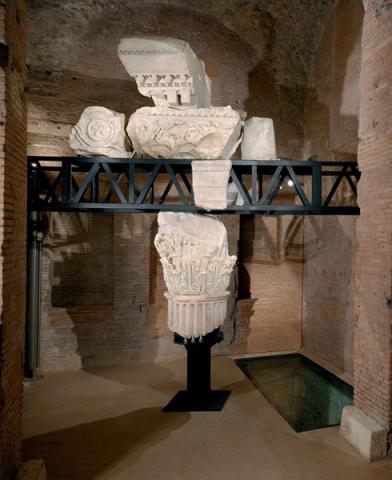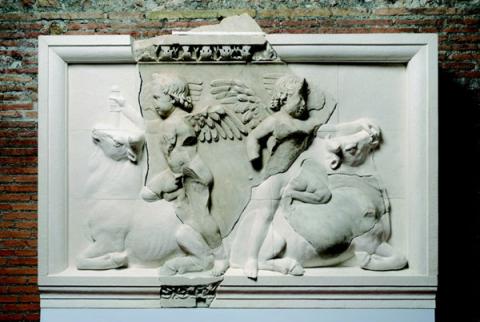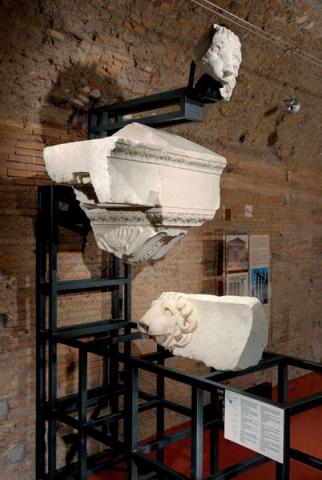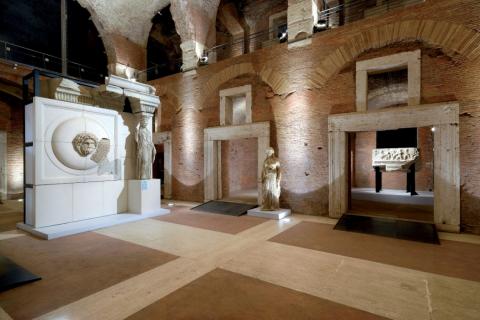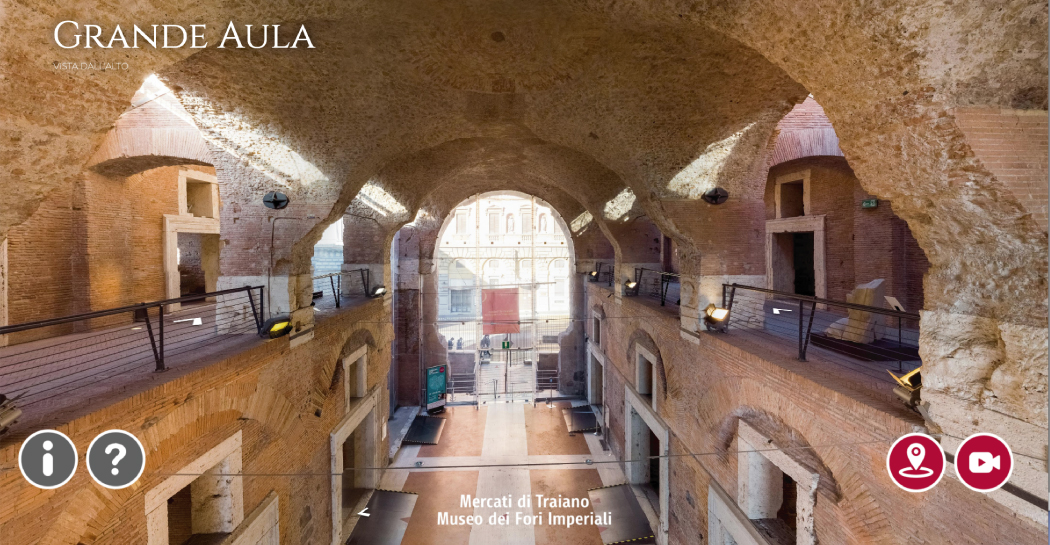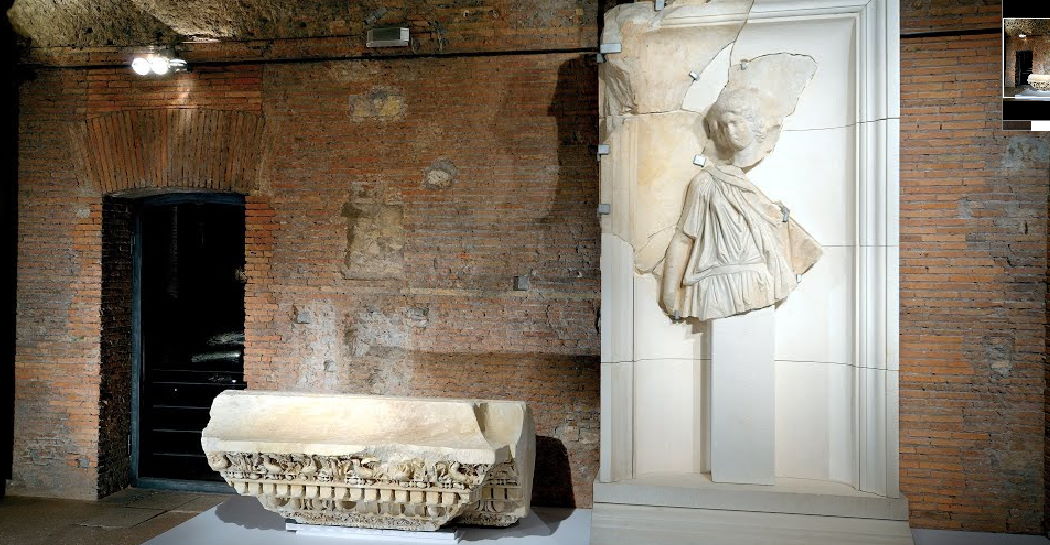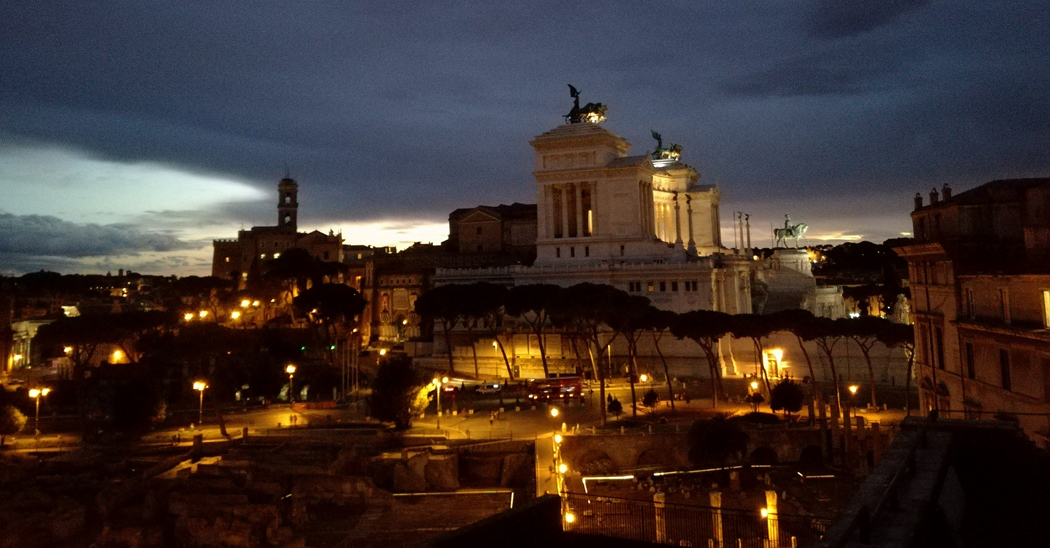History
Since 1985 over 40,000 fragments originating from the forum area have been catalogued and documented from deposits created after excavations carried out in the 20th century. A seemingly huge quantity of finds but in reality they represent a small percentage of what was the enormous quantity of marble facing and super-structure blocks which made up the Antiquarium Forense (Forum District).
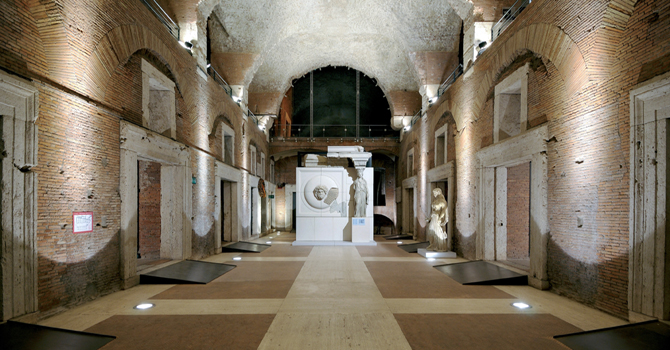

Over the last 20 years, works carried out in the deposits of the forums and markets have focussed on the treatment and restoration of these fragments. However, they have also focussed on making an inventory of all the fragments using photographic documentation. It was this detailed gathering of data which made it possible to identify the most significant pieces for the reconstruction of ancient buildings and their decorative details.
When possible the approach to reassembling original fragments has carefully avoided the introduction of pins. Only when the use of additional newly cut stone and/or resin mouldings was impossible to include for various reasons in the exhibits’ assembly are there pins. Once reassembled, the exhibits then underwent graphical documentation and restoration; a rigorous process that has saved some fragments from complete loss. The identification of new contexts and the definition of architectural orders, and hence the appearance of forum complexes, have formed the basis of study for The Museum of the Imperial Forums project.
Different “routes” intertwine. In fact, the museum project has also had to be a communication project - “the architecture of the Forum in the architecture of the Markets; the history of the city in the history of one of its districts”.


























